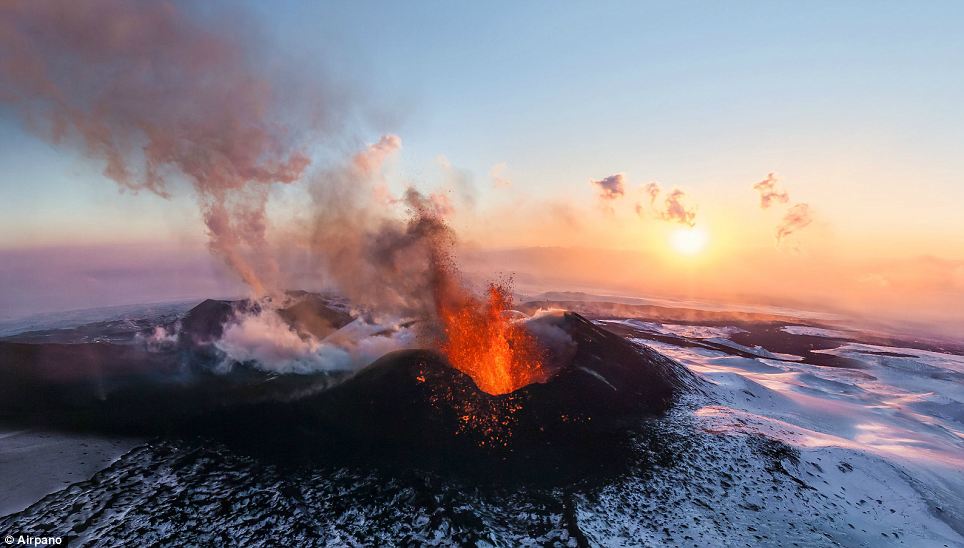
"The 10-station seismic array established as part of the International Mount Erebus Seismic Study was partially dismantled because of funding problems. However, observations in December 1985 suggest that the inner crater was partially filled with ejecta from the eruptions. "Inspection of the volcano in October, November, and December 1984 showed that the lava lake was gone (figure 7, middle).

These are the first known phreatic eruptions at Erebus, and probably resulted from steam build-up associated with melting snow in the crater. The caves at Erebus are at high altitude, yet accessible for study. Degassing bubbles were fewer, larger, and reached about 5-10 m in diameter. Since then there has been little change in surface area, but a slight lowering in the lake level has occurred. Upper “Summit Camp” site (HSM 89) consists of part of a circle of rocks, which were probably used to weight the tent valances. On 17 September at 1010, a bright summit glow was observed from McMurdo Sound. Erebus is the world's only presently erupting phonolite volcano. "Since late 1984, activity has reverted to the daily mild Strombolian eruptions observed prior to that time. Activity has been relatively uniform over the last 15 years with the exception of two significant events. Iacovino, K., 2010, A view from the top: great weather on Erebus, Science Friday, posted 15 December 2010 accessed 24 October 2011. of Hawai'i, 2525 Correa Road, Honolulu, HI 96822, USA (URL: ) Sentinel Hub Playground (URL: ).

"An original tripartite array of short-period seismic stations was installed in December 1980. Doming of the lava lake surface was occasionally observed, including one large blister that grew to ~80 m height before bursting. Significant collapse of the Inner Crater was occurring in late 1995, although the lava lake remained fairly constant in size at ~20 m diameter and generally in the same location.


 0 kommentar(er)
0 kommentar(er)
